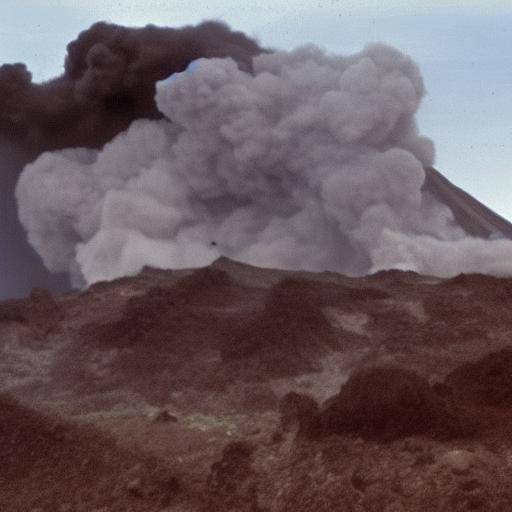
The powerful and majestic phenomenon of volcanoes has captivated mankind throughout history. In Polynesian mythology, specifically in Hawaiian culture, this enigmatic natural power is personified in Pele, the goddess of the volcano. In this article, we will explore the fascinating figure of Pele, its myths and its relevance in Polynesian mythology. In addition, we will address how this mythological figure has interwoven with the culture and life of people in the region. Get ready to get into a world of mystery, passion and volcanic might.
Introduction
The legends and myths that surround Pele, the goddess of the volcano, have been transmitted over generations in Polynesian mythology, particularly in Hawaiian culture. With its power to create and destroy, Pele embodies the duality of the volcanic force, symbolizing both the fertility of the earth and the unbridled destruction. Throughout this article, we will discover the historical and cultural importance of Pele, as well as its impact on the worldview of people living near the volcanoes in the Polynesian region.
History and Background
The history and history of Pele go back to the ancient times of Polynesian mythology. Its origins are intertwined with epic accounts of migrations, divine struggles and the settlement of the islands. The arrival of the mighty Pele to Hawaii marked the beginning of an era of fire and creation, weaving a legacy that lasts until today.
Polynesia mythology: The Context of Pele
Polynesian mythology is rich in gods and goddess who personify forces of nature, elements and supreme values. In this context, Pele emerges as one of the most influential deities, being worshipped and feared equally. His tumultuous relationship with his sister, the goddess of the seas, embodies the eternal struggle between fire and water, a dynamic that has shaped the narratives and beliefs of many Polynesian peoples.
The Pele Figure: Volcano Goddess
Pele stands out as the personification of volcanic power, venerated as the creator of new lands and at the same time feared by its destructive capacity. Its presence extends beyond the craters of the volcanoes, permeating the landscape and everyday life of those who inhabit the Polynesian islands. We observe how the reverence for Pele is manifested in sacred rituals, offerings and narratives that honor its omnipresent influence.
Cultural and Social Impact
The influence of Pele transcends the purely mythological, permeating the culture, arts and daily life of the Hawaiian people. Devotion to the volcano goddess intertwines with celebrations, traditional dances, and even in local architecture. Its legacy persists in the worldview of communities living in the shadow of volcanoes, where the duality of creation and destruction intertwines in a delicate balance.
Curiosities and People ' s Issues
Popular myths and stories echo the fascinating figure of Pele, reinforcing its influence on the collective imagination of Hawaiian society. Through stories transmitted orally, ceremonies and artistic expressions, the essence of Pele persists, conveying the fundamental importance of respecting and venerating the whims of volcanoes.
Conclusion
The history and myths surrounding Pele, the volcano goddess, offer a unique window to the rich Polynesian mythology and its impact on contemporary culture. Through its powerful symbolism, Pele invites us to reflect on the beauty and fragility of life in an environment marked by the inexorable strength of nature. His legacy endures as a reminder of the inextricable relationship between humanity and the overwhelming power of the earth itself. Thus, the figure of Pele continues to inspire respect, admiration and astonishment to the same degree, reminding us of the importance of honoring and preserving the delicate balance of our natural environment. In this sense, the volcano goddess transcends the limits of mythology to incarnate a sempiterno reminder of indomitous force and the ethereal beauty of volcanoes, both as dangers and wonders of nature.
Frequently asked questions
1. What is the symbolic meaning of Pele in Polynesian mythology?
In Polynesian mythology, Pele represents the duality of volcanic fire, personifying creation and destruction. Their symbolism extends to the fertility of the earth and the indomitable force of the volcanoes.
2. What is the relationship between Pele and everyday life in Hawaii?
The influence of Pele is manifested in celebrations, religious rituals and artistic expressions that honor its presence and volcanic power, permeating the daily life and the worldview of the Hawaiian communities.
3. What popular stories and myths are associated with Pele?
Polynesian mythology is impregnated with popular accounts about Pele, who speak of their journey through the islands, their tumultuous relationship with their sister and their influence in the creation of the Hawaiian landscape.
4. How has Pele worship adapted in the contemporary era?
The veneration of Pele has transcended through generations, adapting to the contemporary era in the form of festivals, traditional dances and artistic expressions that continue to honor its legacy.
5. What is Pele's impact on Hawaiian culture and the local worldview?
Pele has left an indelible imprint on Hawaiian culture, influencing the art, architecture and spirituality of the people, and moulding its cosmovision in relation to the volcanic force.
6. Why is Pele's power still relevant today?
The figure of Pele endures as a reminder of the inextricable relationship between humanity and the overwhelming power of nature, inspiring respect, admiration and astonishment to the same extent.
Pele: The Goddess of the Volcano and its myths capture the amazing legacy of Hawaiian divinity through time, highlighting its influence on Polynesian mythology and its lasting impact on contemporary culture. His omnipresent figure lights up the memory of the indomitable force of nature and the delicate balance between creation and destruction. As we immerse ourselves in the mystery and majesty of the volcano goddess, we find a history of strength, passion and power like no other.
